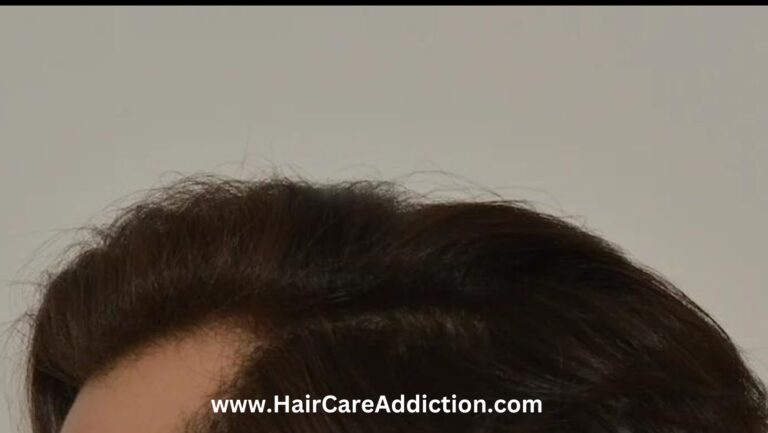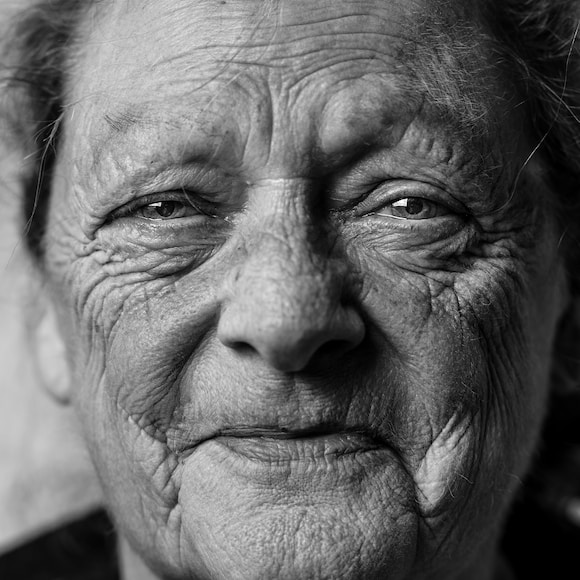Is Minoxidil Beard Permanent: Here’s The Truth!

If you’re looking for a solution to grow a fuller, thicker beard, you might have come across minoxidil as a potential option.
In this article, we’ll discuss whether minoxidil can provide permanent results for beard growth and explore some alternatives for long-lasting facial hair.
So, let’s dive in and find the answer.
Is Minoxidil Beard Permanent?
According to a study published in Frontiers in Endocrinology, a 17-year-old male experienced significant facial hair growth after using minoxidil for three months.
However, it’s essential to understand that minoxidil beard is not permanent.
It will only work as long as you use it. After discontinuing minoxidil for 2-5 months, your beard may start to fall off.

Source: Frontiers in Endocrinology
Why does hair fall out after stopping minoxidil?
To fully understand why hair falls out after stopping minoxidil, we need to understand how minoxidil works on hair. Minoxidil promotes hair growth by:
- Prolonging the growing stage of hair and increasing the follicular size. It converts new tiny hairs called vellus hairs or baby hairs into terminal hairs over time.
- Activating potassium channels present in the hair follicle, which in turn causes hair to grow.
- Exhibiting a vasodilator effect, which means it increases blood flow to the hair follicles and promotes growth.
Minoxidil forces hair to be in the growing stage, altering the normal physiology of hair.
When you stop using minoxidil, hair no longer receives its support and reverts to its original physiology, causing hair to fall out.
Can You Stop Using Minoxidil Beard?
Many men have reported success in using it off-label to stimulate beard growth. But what happens when you stop using it?
It’s important to note that while Minoxidil can stimulate hair growth, it doesn’t alter your body’s genetic hair growth patterns.
This means that if your body isn’t genetically programmed to grow a full beard, the gains you’ve made using Minoxidil may not be permanent.
However, the effects of Minoxidil on beard growth are not as well-studied as its effects on scalp hair, and some anecdotal reports suggest that beard gains might be more permanent.
If you’ve achieved satisfactory results with Minoxidil, it’s generally recommended to continue the treatment for several months longer to consolidate the gains.
After that, you can gradually reduce the frequency of application before stopping altogether.
If you notice a significant decrease in beard fullness after stopping, you might need to restart the treatment.
Always consult with dermatologist before starting or stopping a treatment like Minoxidil.
How to Use Minoxidil for Beard (Best Practice)
To achieve the best results when using minoxidil for beard growth, follow these steps:
- Clean your face: Before applying minoxidil, ensure your face is clean and dry. Wash your face with a gentle cleanser and pat it dry with a towel.
- Measure the right amount: Use the dropper provided with the minoxidil solution to measure the recommended dosage (usually 1 mL). If you’re using minoxidil foam, dispense half a capful of foam onto your fingers.
- Apply minoxidil: Gently spread the minoxidil solution or foam on the areas of your face where you want to promote beard growth. Use your fingers to massage the solution into your skin.
- Allow it to dry: Give the minoxidil solution some time to dry before touching your face or applying other skincare products. This usually takes around 20-30 minutes.
- Wash your hands: After applying minoxidil, wash your hands thoroughly to avoid accidental contact with your eyes or other sensitive areas.
- Apply twice daily: For optimal results, use minoxidil twice a day, preferably in the morning and evening. Be consistent and patient, as it may take several months to notice significant improvements in beard growth.
Is Minoxidil Safe for Beard?
Minoxidil is generally considered safe for beard growth when used as directed.
However, it’s essential to follow the recommended dosage and application guidelines to minimize the risk of side effects.
Always consult with a healthcare professional before starting minoxidil treatment, especially if you have any pre-existing medical conditions or concerns.
Minoxidil Beard Side Effects
While minoxidil is generally safe, some individuals may experience side effects when using it for beard growth. These side effects may include:
- Skin irritation: Some people may experience redness, itching, and flaking on the skin where minoxidil is applied. If these symptoms persist or worsen, discontinue use and consult a healthcare professional.
- Unwanted hair growth: Minoxidil may cause unwanted hair growth in areas where it comes into contact with the skin, such as the cheeks or forehead. To avoid this, carefully apply minoxidil only to the desired areas and wash your hands thoroughly after application.
- Allergic reactions: In rare cases, some individuals may experience an allergic reaction to minoxidil, including symptoms like rash, hives, or difficulty breathing. If you suspect an allergic reaction, stop using minoxidil and seek medical attention immediately.
- Systemic side effects: Although uncommon, some people may experience systemic side effects such as dizziness, rapid heartbeat, or swelling in the hands and feet. If you experience any of these side effects, stop using minoxidil and contact your healthcare provider.
Alternatives to Minoxidil for Permanent Beard Growth
If you’re seeking alternatives to Minoxidil for beard growth, here are a few options to consider:
Healthy Lifestyle: Proper nutrition, regular exercise, and adequate sleep can improve your overall health, including your hair growth. Specific nutrients like biotin and protein are essential for hair health. Staying well-hydrated and managing stress are also important factors.
Microneedling: This involves using a device called a dermaroller, which has tiny needles that create micro-injuries on the skin surface, stimulating blood flow and potentially promoting hair growth when the skin heals.
Beard Transplant: This is a more invasive and expensive option, but it offers a permanent solution. It involves transplanting hair follicles from another part of your body to your face.
Natural Supplements: Certain natural supplements like biotin, saw palmetto, and pumpkin seed oil have been suggested to promote hair growth, though more research is needed to confirm their effectiveness.
Topical Products: There are numerous beard oils, balms, and creams that claim to promote beard growth. While they may not be as potent as Minoxidil, they can help to create a healthy environment for hair growth by moisturizing and nourishing the skin and hair.
Remember, everyone’s body responds differently to different treatments. What works well for one person might not work as well for another. Always consult with a healthcare provider before starting a new treatment for beard growth.
Read also: Minoxidil Vs Neohair Lotion: which one is better?
Conclusion
In conclusion, while minoxidil can stimulate facial hair growth, it’s not a permanent solution.
Once you stop using minoxidil, your beard may begin to fall out after a few months. If you’re looking for a permanent solution to grow facial hair, a beard transplant might be the best option.
We hope this article has provided you with the information you were seeking.






